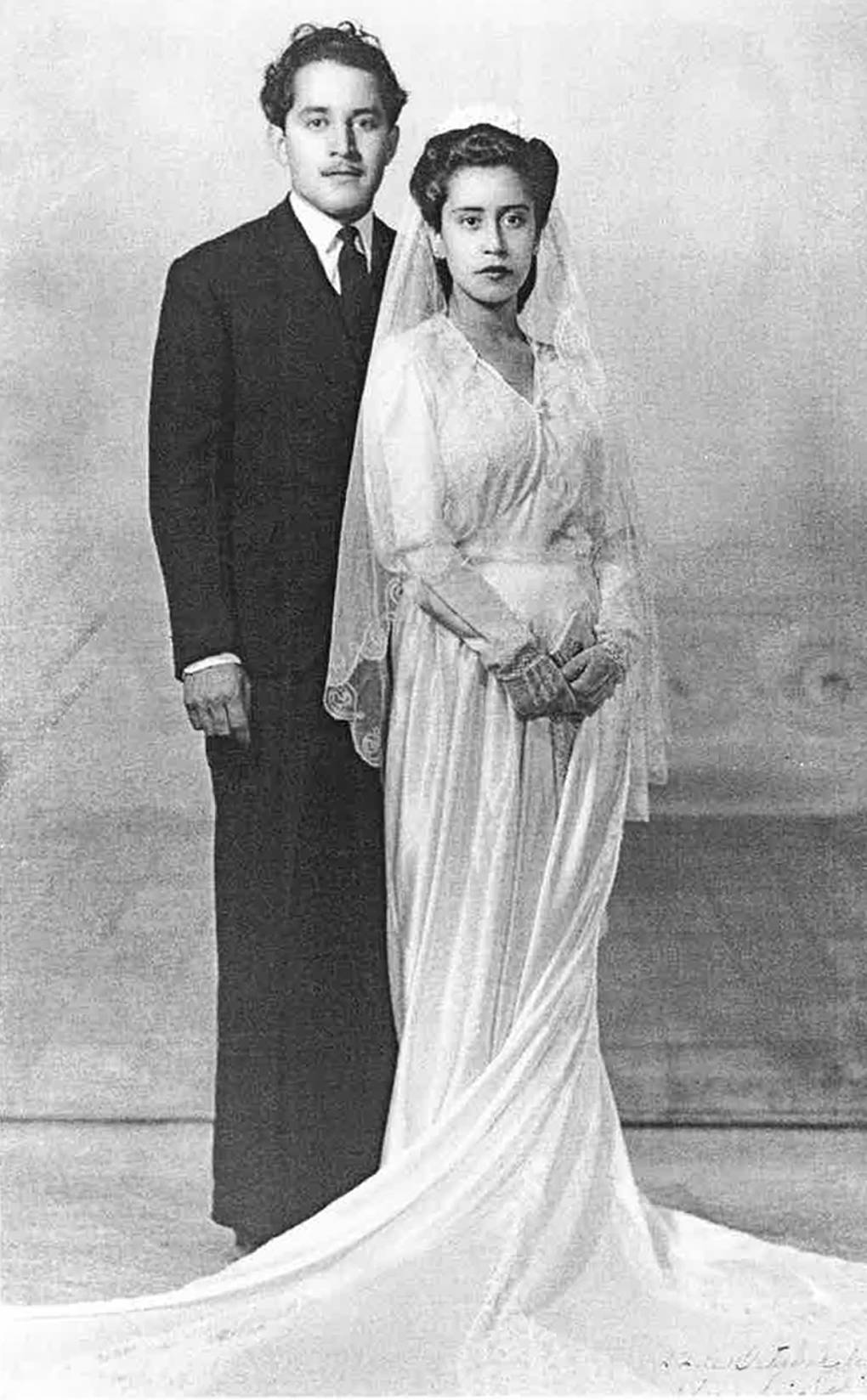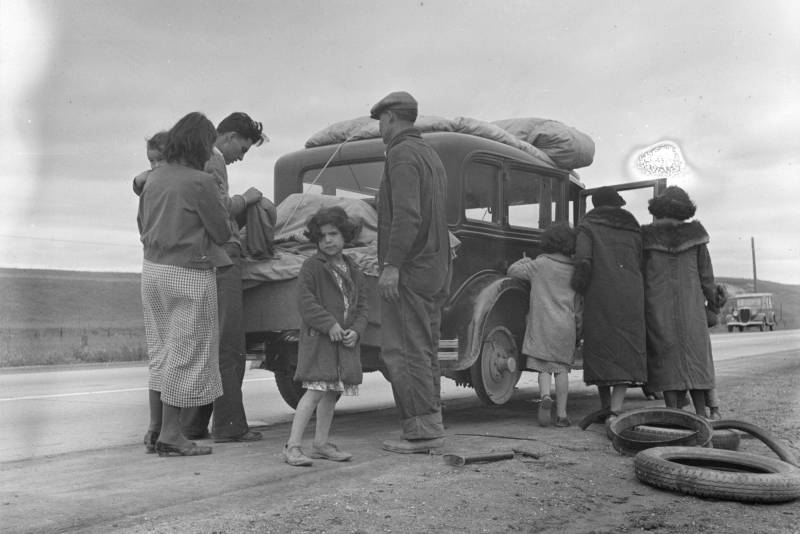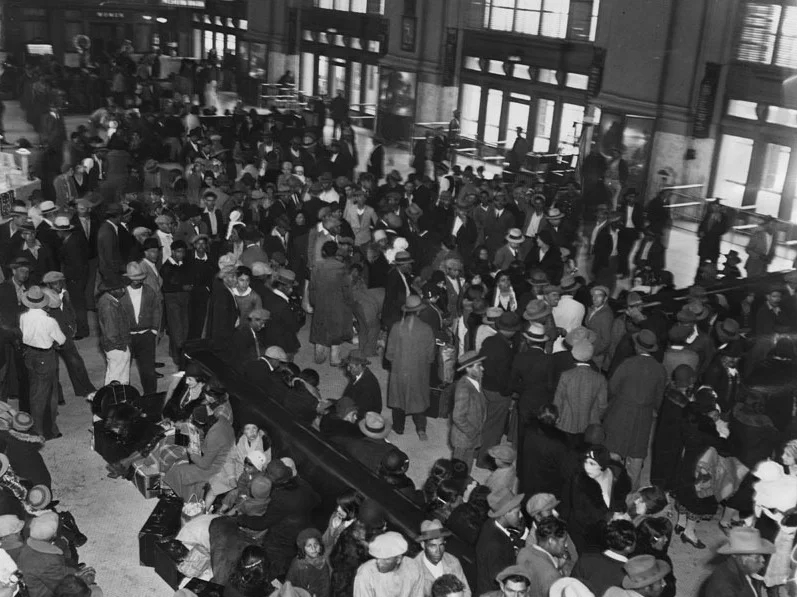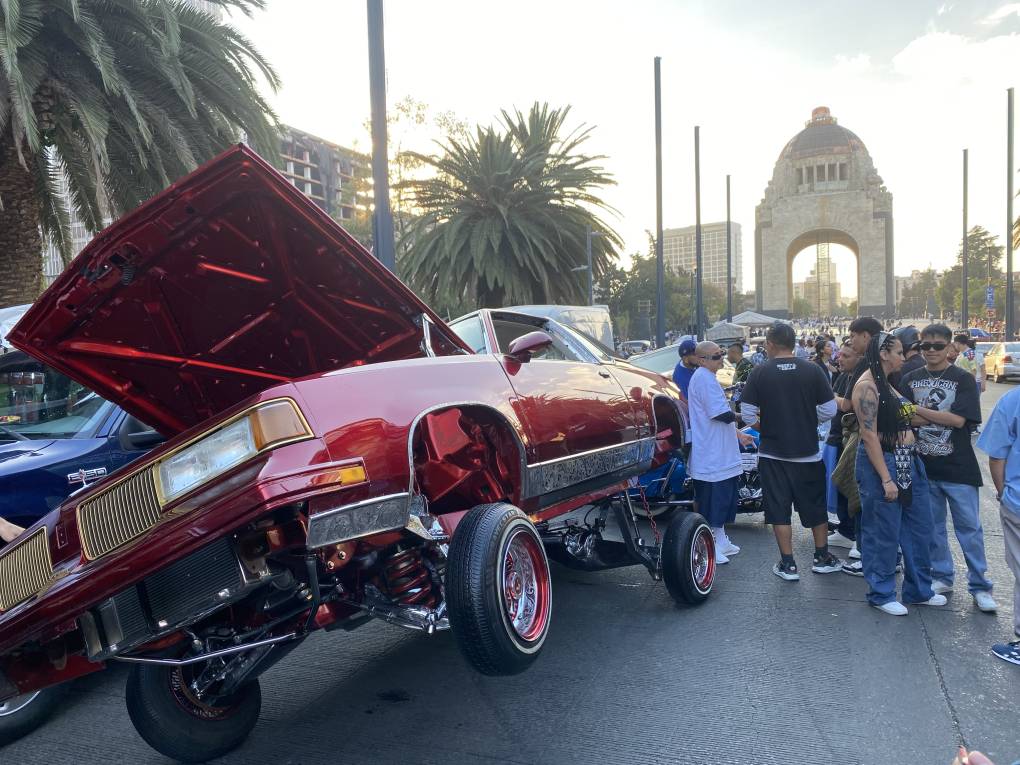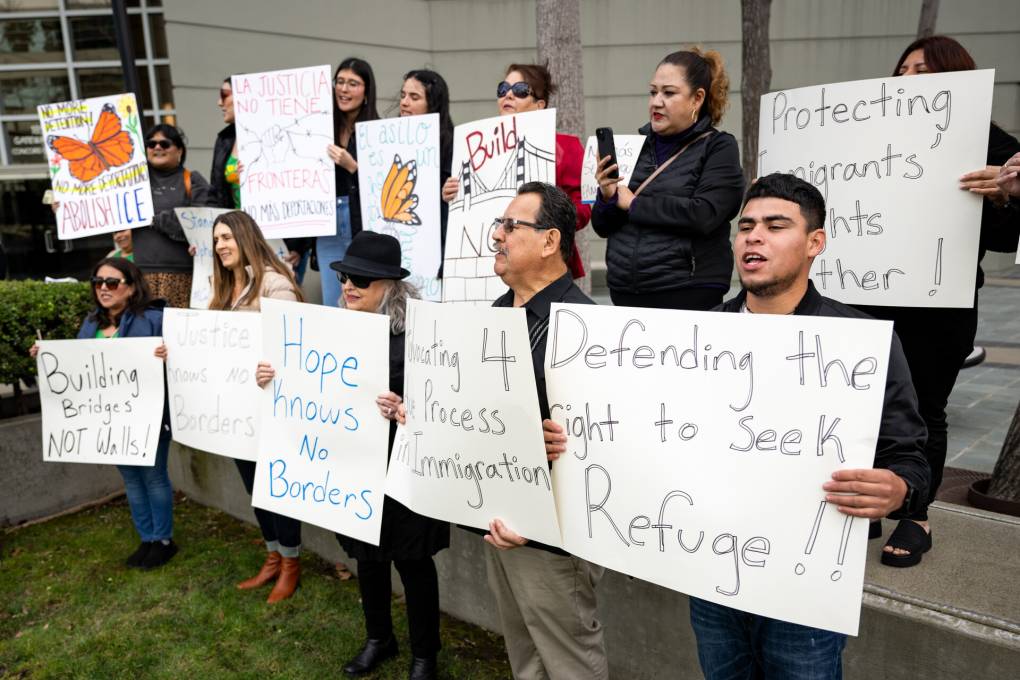“He was about 12 years old in 1930,” Cabrera said. “He was put into a box car over by Los Angeles at Union Station, and they’re shipped out and ended up in San Luis Potosí in Mexico.”
He said his grandfather never complained about what he had been through and worked hard to build a good life for his family. But when Cabrera became an adult, he began to realize how hard it must have been for the family to leave everything behind.
“They didn’t have a lot of belongings that they took with them when they were being deported,” he said.
‘A lawless deportation’
UC Davis Law School Dean Kevin Johnson said government officials flagrantly disregarded people’s constitutional rights.
“It was a lawless deportation,” he said. “There were no removal procedures. There’s no process, there’s no nothing. And [under law] you can’t deport a citizen. You can’t force a citizen to leave the country.”
Johnson points out that “repatriation” is a misnomer for the hundreds of thousands of Americans who had never lived in Mexico, including his former colleague, the late California Supreme Court Justice Cruz Reynoso.
“I view the repatriation as an ethnic cleansing that took place in the greater Southwest, including Los Angeles, in the Great Depression,” he said. “And it’s had significant impacts…. For generations, Mexican identities were kept, some might say, ‘in the closet.’ It was kept quiet.”
Officials in places like Los Angeles adopted the term “repatriation” because they were waging pressure campaigns to induce Mexicans to “voluntarily” depart, as well as collaborating with federal immigration authorities to carry out formal deportations.
Research shows some families were coerced into “self-deporting” through persuasion, threats or intimidation. Others were rounded up by force, even taken from hospitals. Johnson notes that, though immigration enforcement is a federal responsibility, local officials were often the ones conducting the raids.
One of the most notorious incidents took place in Los Angeles in February 1931, where city police corralled hundreds of people at La Placita, the plaza in front of Our Lady Queen of Angels Catholic Church, in a Mexican neighborhood. Officers checked papers and trucked dozens of people to the train station to send them to Mexico.
‘Obviously it could happen again’
Tamara Gisiger was a high school junior when she learned about the Mexican Repatriation. Her class was studying the Great Depression, and she wanted to focus her final paper on how it had affected people of Mexican heritage like her. She said she was shocked by what her research turned up.
“When I brought it up to my teacher, I was even more shocked when she didn’t know about it,” said Gisiger, who’s starting her first year at Bowdoin College. “So, I started talking to family members about it.”
She learned that a cousin’s grandfather was deported and the family had to start over at the southern tip of Baja California, a region where “repatriates” were promised land but, with no water, found it nearly impossible to farm.
“It’s very un-talked about because it’s shameful,” she said. “It’s traumatizing and hidden from the family.”
Gisiger’s paper came to the attention of California State Sen. Josh Becker, and together, they wrote the bill to place the memorial at La Placita park in Los Angeles.
Becker said Americans need to learn this history because the inflammatory way that former President Donald Trump speaks about immigrants as he campaigns for president echoes the anti-immigrant climate that made Mexican Repatriation possible.
“Today we are seeing the same kind of hateful, vile rhetoric coming from political leaders, and actually calls for mass deportation,” Becker said at a recent press conference promoting the bill. “I think many people think, ‘Oh, that’s just rhetoric that will never happen.’ We’re here to say: ‘This happened in the past and obviously it could happen again.’”
There were an estimated 11 million unauthorized immigrants in the United States as of 2022. The Republican party platform pledges to “Carry out the largest deportation operation in American history,” something analysts predict would be complicated and very costly. A growing share of Americans — though still a minority — support large-scale deportations, polls show.
